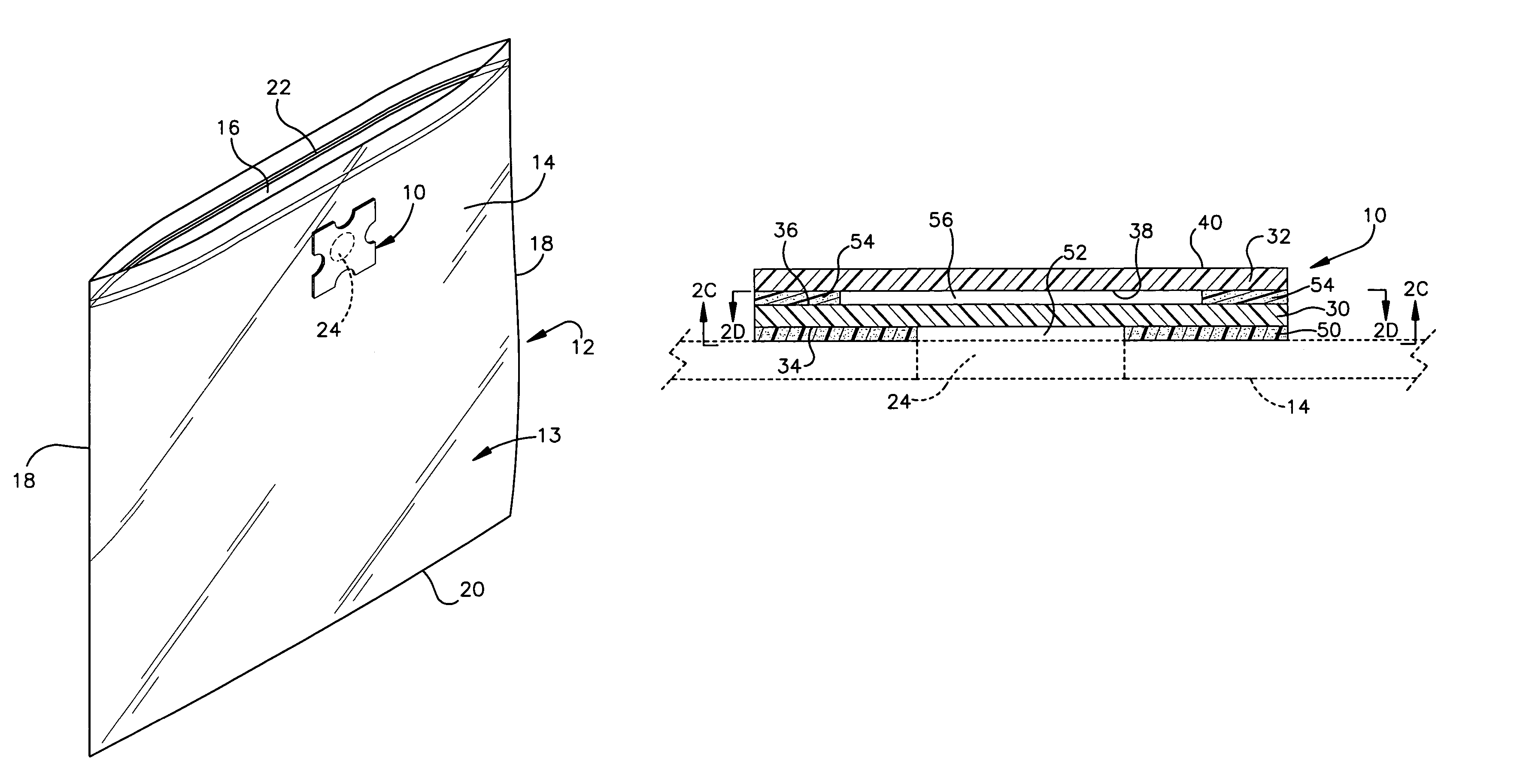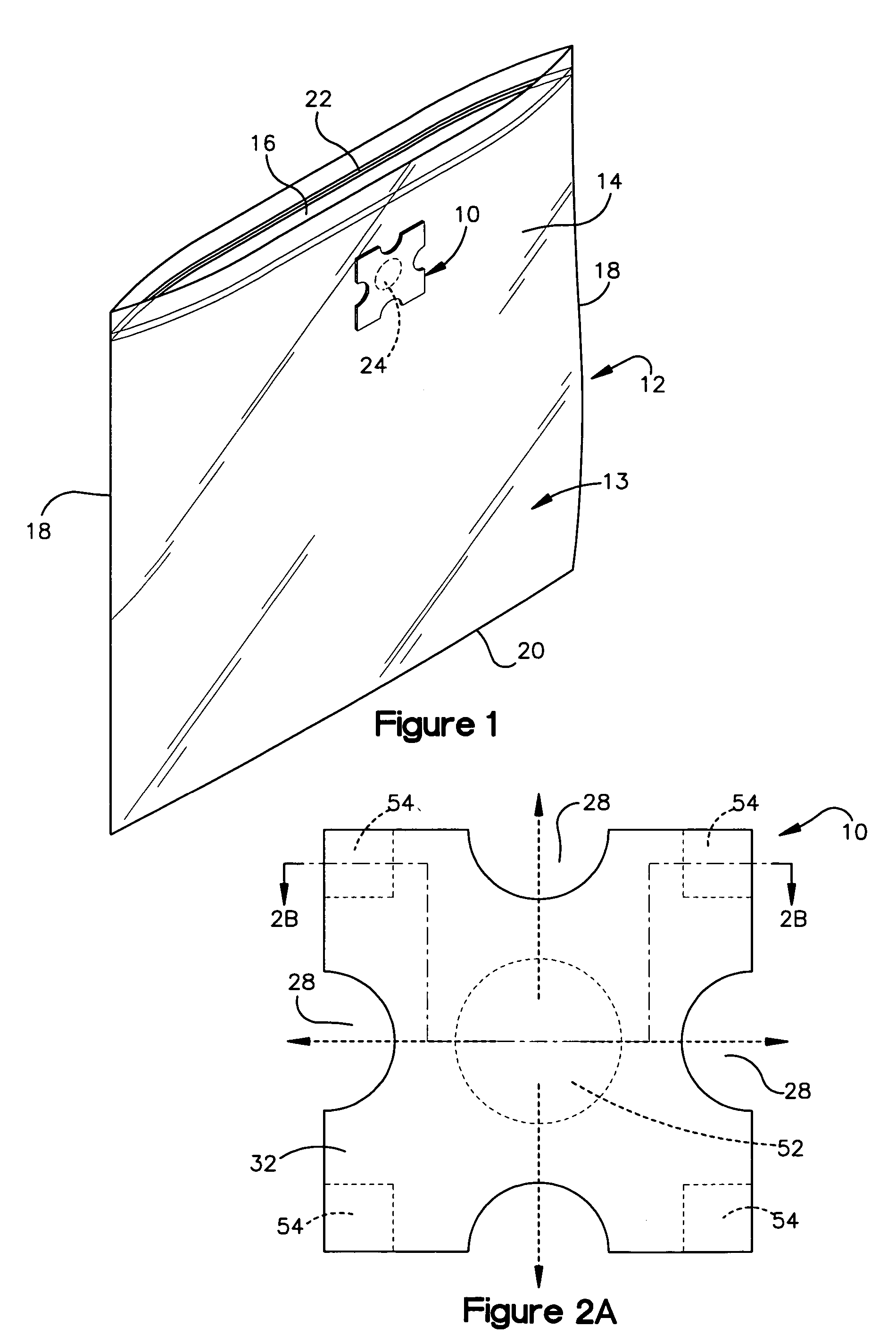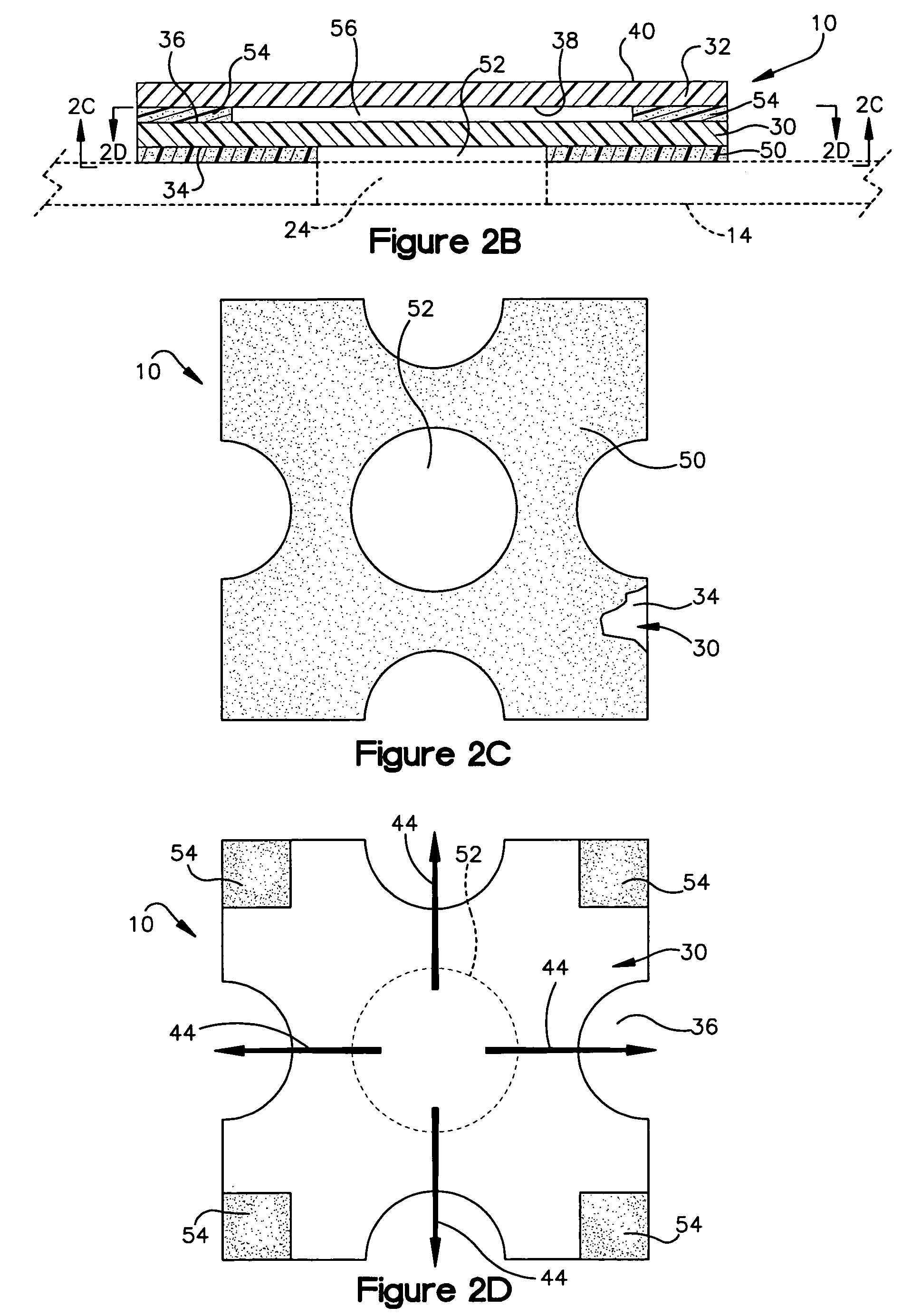Food bag release valve
a technology of food bags and release valves, which is applied in the field of food bag release valves, can solve the problems of complex deterioration of food quality, dehydration that occurs, and can affect the current (and fast) bag-making speed, and achieves the effects of ensuring the safety of food bags
- Summary
- Abstract
- Description
- Claims
- Application Information
AI Technical Summary
Benefits of technology
Problems solved by technology
Method used
Image
Examples
Embodiment Construction
[0045]Referring now to the drawings and initially to FIG. 1, a valve 10 according to the present invention is shown incorporated into a food bag 12. The food bag 12 can be intended for use as a freezer bag (i.e., to store foods intended to be frozen) and, as is explained in more detail below, the valve 10 supplies sufficient (or even superior) freezer-burn protection. The valve 10 can be easily fabricated and incorporated into existing food bag designs and may find application in “non-freezer-bag” applications as it can help improve freshness and / or reduce space.
[0046]The illustrated food bag 12 has a standard bag construction 13 comprising two side panels 14 and 16, each having a rectangular shape (although other geometries are certainly possible). The panels 14 and 16 can be made from a thermoplastic material or a blend of thermoplastic materials such as, for example, polyolefins such as high density polyethylene (HDPE), low density polyethylene (LDPE), linear low density polyethy...
PUM
 Login to View More
Login to View More Abstract
Description
Claims
Application Information
 Login to View More
Login to View More - R&D
- Intellectual Property
- Life Sciences
- Materials
- Tech Scout
- Unparalleled Data Quality
- Higher Quality Content
- 60% Fewer Hallucinations
Browse by: Latest US Patents, China's latest patents, Technical Efficacy Thesaurus, Application Domain, Technology Topic, Popular Technical Reports.
© 2025 PatSnap. All rights reserved.Legal|Privacy policy|Modern Slavery Act Transparency Statement|Sitemap|About US| Contact US: help@patsnap.com



